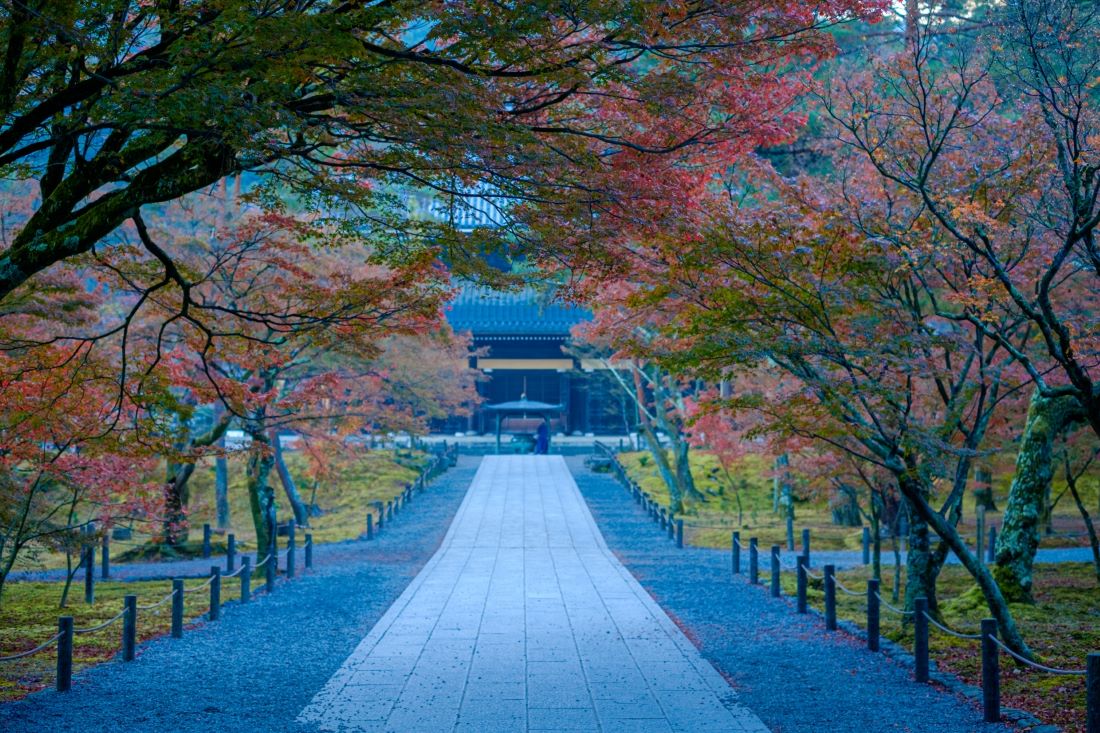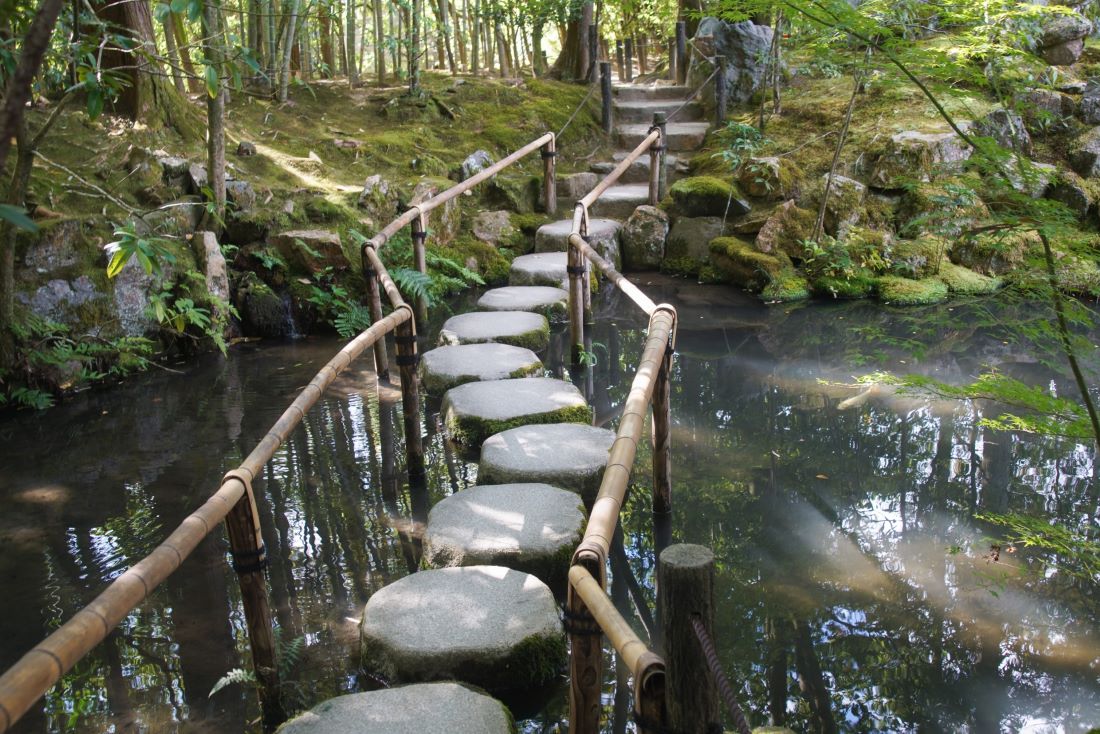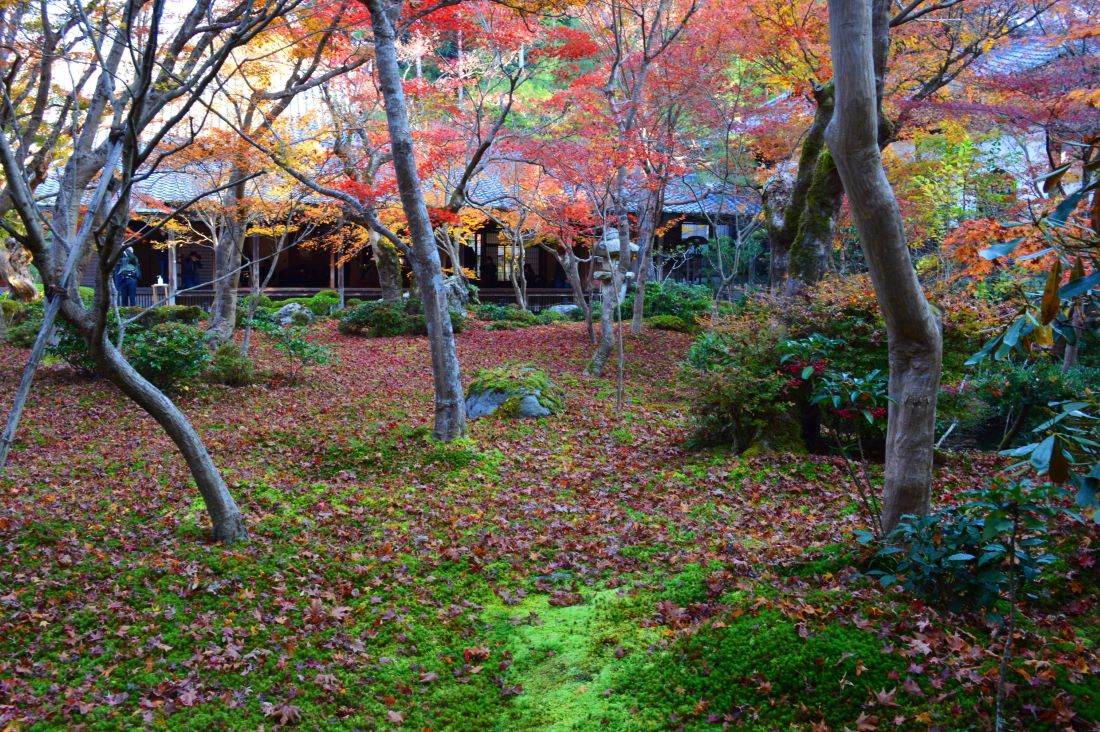Nanzenji Temple, located at the base of Kyoto’s Higashiyama mountains, is one of the most popular and significant Zen temples in Japan.
It was established in the 13th century by Emperor Kameyama and has since been a center for Zen Buddhism. The temple’s spacious grounds are home to sub-temples, gardens, and structures, each with its own unique history and significance.

One of the most notable features of Nanzenji Temple is its massive main entrance gate, which was built in the style of a Roman aqueduct. The temple’s grounds also include a beautiful garden, which is particularly stunning during the autumn season when the leaves change color. You can also explore the various sub-temples on the grounds and participate in meditation sessions.
History

The temple was established in 1291 by Emperor Kameyama, who built his retirement villa at the temple’s present location. The villa was later converted into a temple by the emperor’s son, Emperor Fushimi. The temple was originally named Zenrin-ji, but it was later renamed to Nanzen-ji.
During the Muromachi period (1336-1573), it was destroyed by fire and rebuilt by the shogun Ashikaga Yoshimitsu.
The temple was further expanded during the Edo period (1603-1868) under the patronage of the Tokugawa shoguns. The Sanmon gate, which was built in 1628, is one of the largest wooden gates in Japan.

During the Meiji period (1868-1912), the temple was designated as a national treasure. The temple played an important role in the development of the Japanese tea ceremony, and it was frequented by tea masters such as Sen no Rikyu and Kanamori Sowa.
Today, Nanzenji Temple is a popular attraction and a place of worship for many Japanese Buddhists. The temple complex includes several buildings, gardens, and a large aqueduct that was built during the Meiji period to transport water from Lake Biwa to Kyoto.
Architecture

The temple was originally built in the 13th century and has undergone several renovations and additions over the years. The temple complex is known for its unique and beautiful architecture, which combines traditional Japanese and Chinese styles.
The main gate of the temple, known as the Sanmon Gate, is a National Treasure of Japan and is considered one of the finest examples of Zen temple architecture in the country.

The gate is a two-story structure with a thatched roof and features intricate carvings and decorations. You can climb to the top of the gate for a panoramic view of the temple complex and the surrounding mountains.
Another notable building in the temple complex is the Hojo, or Abbot’s Quarters. This building was originally constructed in the 17th century and features a beautiful garden and a large tatami room where the abbot would receive guests. The Hojo is also home to several important works of art, including a painting of a dragon by the famous artist Sesshu Toyo.
The temple also features several other buildings, including a meditation hall, a tea house, and a large stone aqueduct that was built in the 19th century to bring water to the temple’s gardens.
Gardens

Nanzenji Temple is known for its beautiful gardens, which are considered some of the finest examples of Japanese garden design. It has several gardens, each with its own unique features and characteristics.
One of the most famous gardens is the Tenjuan Garden. A small subtemple located within the grounds and is dedicated to the Zen master who served Emperor Kameyama in his religious studies. It has a main hall, gate, and a beautiful garden that features a pond, a waterfall, and plants and trees.

Another notable garden at Nanzenji is the Hojo Garden. This garden is located behind the abbot’s quarters and is known for its simplicity and elegance. The garden features a pond, a stone bridge, and carefully placed rocks and plants that create a serene and peaceful atmosphere.
The Kohojo Garden is let another notible garden within the ground. It is on the west side of the Kohojo, a small abbot hall that is a national treasure of Japan. The Kohojo Garden was created by Ueyakato Landscape and features a pond, a waterfall, and plants and trees that change with the seasons.

You can also explore the Suirokaku Aqueduct, which is located on the temple grounds. It was built in the Meiji period and was used to transport water from Lake Biwa to Kyoto. Today, the aqueduct is a popular spot for taking photos and enjoying views of the surrounding mountains.
Tea Ceremony at Nanzenji Temple

One of the highlights of a visit to this temple is the tea ceremony, a traditional Japanese practice that dates back to the 9th century. The tea ceremony is a ritualistic way of preparing and serving matcha, a powdered green tea.
Youcan participates in a tea ceremony for a fee of 500 yen per person. The ceremony takes place in a small tea room located in the former temple kitchen (kuri). The tea room is a simple, yet elegant space with tatami mats and a low table.
The ceremony is conducted by a tea master, who performs each step of the ritual with precision and grace. The tea is prepared using a bamboo whisk and a traditional ceramic bowl, and is served with a sweet treat.
Note that the tea ceremony is not just about drinking tea, but also about the experience of being present in the moment and appreciating the beauty of the surroundings. You are encouraged to take your time and savor each sip of tea while admiring the peaceful surroundings of the temple.
Visiting Information

Located in the Higashiyama district of Kyoto, it is easily accessible by public transportation, and you can take the Kyoto City Bus to the Nanzen-ji Eikando-michi bus stop. From there, it is a short walk to the temple grounds. You can also take the Kyoto City Subway to Keage Station and walk to the temple from there.
Admission to Nanzenji Temple is 500 yen for adults and 400 yen for high school and college students. Children under the age of 15 can enter for free. The temple is open from 8:40am to 5:00pm, with last admission at 4:30pm. Visitors should note that the temple is closed on December 28th and 29th.
Visitors should also be aware that there are several rules and guidelines that must be followed while visiting Nanzenji Temple. Shoes must be removed before entering the temple buildings, and photography is not allowed in certain areas. Visitors should also be respectful of the temple’s religious significance and avoid loud conversations or disruptive behavior.
There are several other attractions in the area to check out. The Eikando Temple, known for its stunning autumn foliage, is nearby. The Philosopher’s Path, a picturesque walking trail that follows a canal lined with cherry blossom trees, is also in the area. And don’t forget the Heian Shrine, which is also a short distance away.
Details
| Information Category | Details |
|---|---|
| Name | Nanzenji Temple (南禅寺) |
| Address | Nanzenji-fukuchi-cho, Sakyo-ku, Kyoto, Japan |
| Ticket Cost | Hojo and Garden: 500 JPY; Nanzenin: 300 JPY; Tenjuan: 400 JPY; Sanmon Gate: 500 JPY |
| Opening Times | 8:40 – 17:00 (Hours may vary slightly depending on the season and specific area) |
| Website | http://www.nanzen.net/english/ |
| Nearby Hotels | |
| Luxury | The Westin Miyako Kyoto – 1.1 km, |
| Kyoto Brighton Hotel – 2.2 km, | |
| Mid-range | Hotel Heian No Mori Kyoto – 0.9 km, |
| Kyoto Travelers Inn – 1.4 km, | |
| Budget | Guest House Taiko-ya Bettei – 1.3 km, |
| Santiago Guesthouse Kyoto – 1.4 km, |



